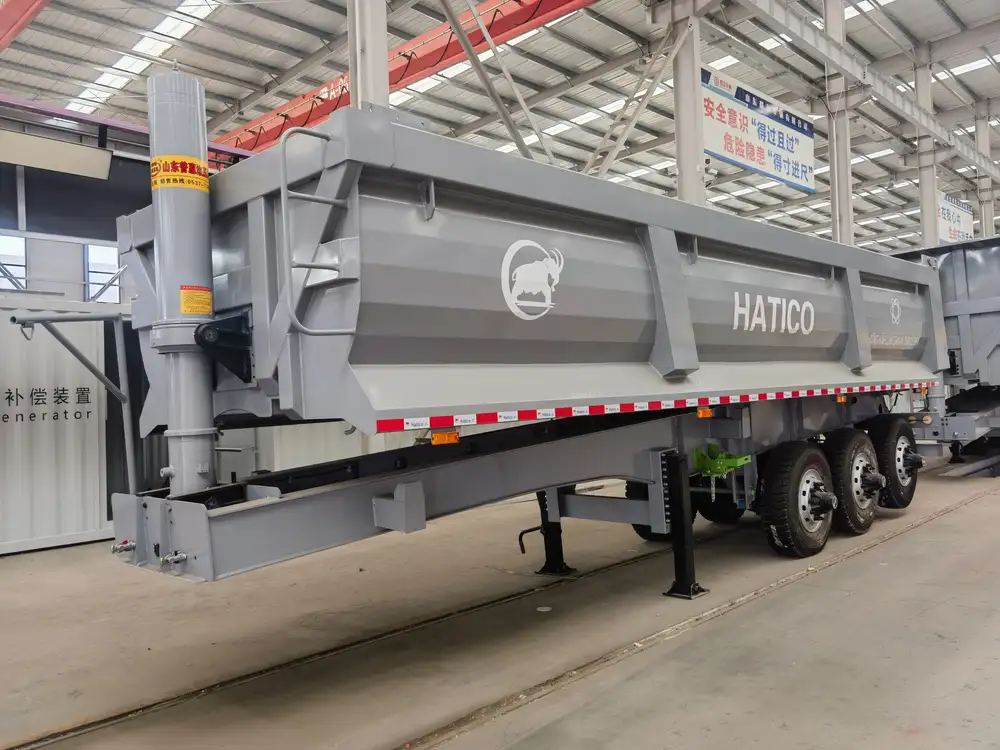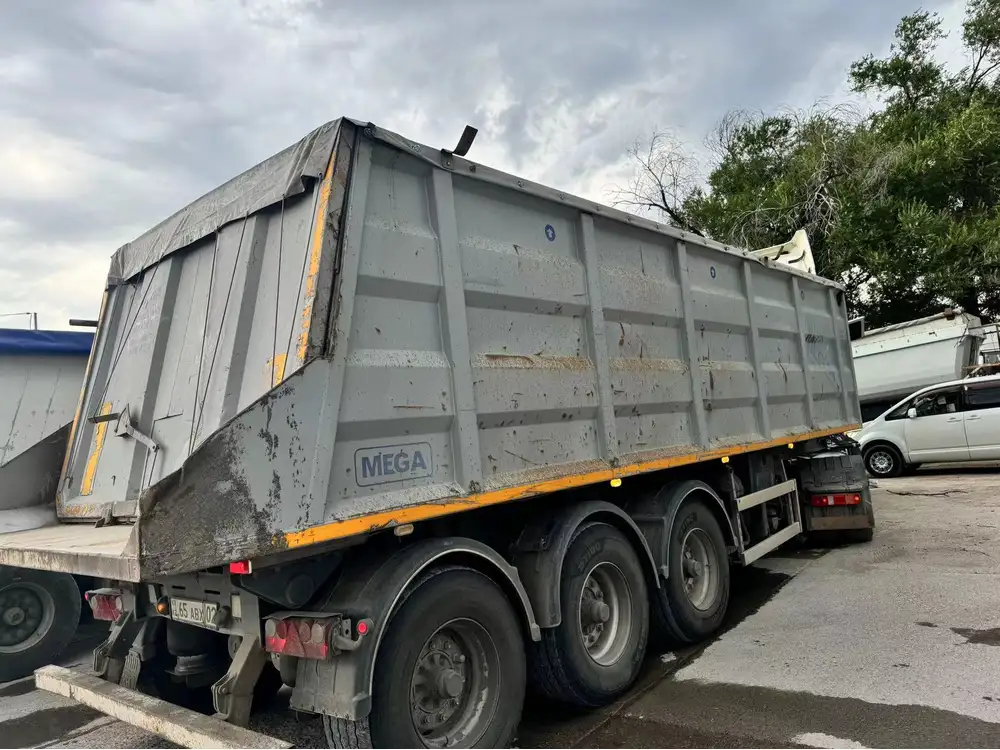Loading a flatbed trailer efficiently and safely not only maximizes your load but also prevents accidents and damage. This guide delves into the techniques, strategies, and best practices that ensure a successful loading experience. Whether you’re transporting construction materials, machinery, or oversized goods, understanding how to load a flatbed trailer properly is paramount.
Understanding Flatbed Trailers
Flatbed trailers are unique due to their open design, featuring a flat surface without sides or a roof. This design allows for versatile loading options and the capacity to accommodate diverse cargo configurations. The trailers come in various sizes, typically ranging from 20 to 53 feet.
Types of Flatbed Trailers
| Type | Description | Ideal Uses |
|---|---|---|
| Standard Flatbed | A basic trailer with a flat surface. | General freight, construction items. |
| Step Deck | Features a lower deck for taller cargo. | Oversized loads, machinery. |
| Double Drop | Includes two drops, allowing for the transport of very tall items. | Heavy equipment, construction. |
| Removable Gooseneck (RGN) | Connects to the truck via a removable front section. | Heavy machinery, equipment. |
Understanding the type of flatbed trailer you are using is the first step toward efficient loading.

Safety First: Essential Precautions
Before loading, it is critical to adhere to safety protocols, which not only safeguard your cargo but also protect those involved in the loading process.
- Wear Safety Gear: Use helmets, gloves, and steel-toed boots to protect against injuries.
- Inspect the Trailer: Conduct a thorough inspection of the trailer for any damages. Check that the tires are inflated correctly, the lights function, and the braking system works efficiently.
- Prioritize Weight Distribution: Even weight distribution is crucial. Improperly loaded trailers can tilt or destabilize, especially during transit.
Preparing for the Load
Step 1: Assess the Cargo
Before loading begins, critically evaluate the cargo:
- Weight: Know the overall weight as well as the weight per item.
- Size and Dimensions: Measure length, width, and height to ensure they fit the trailer and conform to legal restrictions.
- Stability: Consider how the cargo behaves. Will it shift during transit, or is it sturdy enough to remain in place?

Step 2: Gather Loading Materials
Prepare essential materials to facilitate the loading process:
- Loading Ramps: Used for wheeled equipment like forklifts or vehicles.
- Dunnage: Blocks, pallets, or boards that can stabilize the cargo and distribute weight evenly.
- Straps and Chains: Necessary for securing the load.
Step 3: Plan the Layout
Strategically plan your layout on the flatbed. A good plan considers:
- Center of Gravity: Place heavier items lower and towards the trailer’s center.
- Access and Clearances: Ensure that all cargo is accessible and does not exceed height or width restrictions.
Loading the Trailer: Step-by-Step Instructions

Step 1: Positioning the Load
When loading large or bulky items, it’s vital to position them correctly.
- Use an Approach Angle: Drive onto the trailer from a slight angle to ensure smoother entry. If using a forklift, approach straight on.
- Starting with the Heaviest Loads: Begin by loading the heaviest items first in the front compartments of the flatbed trailer.
Step 2: Arrange the Cargo
As you load, think about the arrangement:
Stacks: If stacking, make sure to follow the weight limits and ensure that lower layers are able to support the upper layers.
Stacking Strategy Considerations Low and Wide Enhances stability High Center of Gravity Keep low to prevent tipping Use Dunnage: Employ dunnage where needed to enhance stability and prevent cargo from sliding.
Step 3: Securing the Load
Securing your cargo is essential for safe transport.
Strapping Techniques:
- Use ratchet straps and tie-downs—run them over the cargo, anchoring them at designated points on the trailer.
- Employ a ‘Pallet Wrap’ for loose items to prevent shifting during transit.
Chain Requirements: If you’re using chains to secure heavier items, ensure that they’re tight and anchored appropriately, following the guidelines specified by both the chain’s manufacturer and the Department of Transportation (DOT).

Checkpoints Before Departure
Upon completing the loading process, perform a meticulous final inspection:
- Verify Tie-Downs: Make sure that all cargo is secure and that straps/chains are adequately tightened.
- Examine Clearance Levels: Confirm that the load does not protrude beyond legal limits and that all sides and the top of the trailer are compliant with transportation regulations.
- Weight Distribution: Check the weight distribution again to ensure balance. Refer to the trailer’s load chart if available.
Tips and Tricks for an Effective Loading Experience
- Practice Makes Perfect: Regularly practicing loading techniques will enhance skills and promote safety.
- Communicate: If working with a team, clear communication is essential.
- Know Your Local Laws: Become familiar with the transportation laws relevant to your area, particularly concerning load size limits and associated permits.
Common Loading Pitfalls to Avoid
| Pitfall | Consequences | Solution |
|---|---|---|
| Poor Weight Distribution | Risk of overturning | Ensure even loading |
| Insecure Cargo | Accidents in transit | Use proper tie-down equipment |
| Ignoring Clearance Heights | Legal penalties | Measure before loading |
| Not Following a Checklist | Missing safety steps | Create and use a loading checklist |

Conclusion
Safely loading a flatbed trailer is both an art and a science. By following the outlined steps and guidelines, we can ensure that each load is transported securely and efficiently, minimizing the risk of accidents and damages. Continuous learning and adaptation are crucial; as loads and regulations evolve, so too must our techniques.
Remember, the key to effective loading lies in preparation, knowledge of the equipment, and awareness of safety protocols. As manufacturers, we are dedicated to providing superior flatbed trailers and ensuring that our customers are equipped with the necessary knowledge to operate them safely. Employing the above methods will lead to successful loading experiences, helping you outrank competitors and establish a reputation for reliability and competence in your industry.



